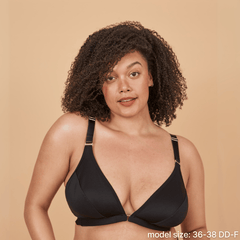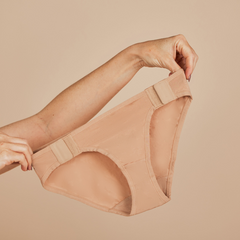
In the realm of fashion and undergarments, few articles have stirred as much conversation, controversy, and celebration as the bra. This seemingly simple piece of attire is anything but and it has a long and interesting history. But have you ever wondered about the story behind its invention? What prompted its creation, and how has it evolved over time?
Garments that served the same purpose as a bra have existed throughout history, from linen bindings worn by Minoan women to the corsetry of the Renaissance era.
However, it wasn't until the late 19th and early 20th centuries that the modern bra as we know it began to take shape. The earliest pioneer was Mary Phelps Jacob.

Mary Phelps Jacob was an American socialite who, in 1914 at the age of 19, created one of the earliest versions of the modern bra. Frustrated with the discomfort of wearing a corset under her evening gown, she improvised by sewing together two silk handkerchiefs and some ribbon to create a more comfortable and supportive undergarment. This design not only provided her with greater freedom of movement but also maintained the shape of her dress.
Recognizing the potential of her invention, Jacob patented her design in 1914 under the name "Backless Brassiere." She later sold the patent to Warner Brothers Corset Company for $1,500. The brassiere, as it was originally known, gained popularity as an alternative to the restrictive corsets of the time.
While Mary Phelps Jacob's invention marked a significant step in the evolution of undergarments for women, it's worth noting that the modern bra was the result of cumulative improvements and innovations by various designers and manufacturers over the years.
As the 20th century progressed, the bra underwent numerous transformations, reflecting shifting societal norms, technological advancements, and changing fashion trends. From the padded silhouettes of the 1950s to the minimalist designs of the 21st century, each iteration tells a story of innovation and adaptation.
The evolution of the bra

1900s-1910s (Edwardian Era):
Bras were not yet commonly worn in this era. Women typically wore corsets or corset-like undergarments that emphasized an hourglass figure.
1920s (Roaring Twenties):
The 1920s saw the rise of the "flapper" style, which favored a more boyish silhouette. Bras became lighter and less restrictive, often resembling bandeaus or bust bodices to flatten the chest.
1930s (Great Depression Era):
Bras evolved to provide more shaping and support. The "bralette" emerged, featuring cups with minimal structure and elastic bands around the chest.
1940s (World War II Era):
With fabric rationing during the war, bras became simpler and more utilitarian. The bullet bra, featuring pointed cups, gained popularity during this time.
1950s (Post-War Era):
The 1950s saw the introduction of the modern bra as we know it today, with innovations like underwire and adjustable straps. The "sweater girl" look, popularized by Hollywood stars, emphasized a rounded bust.
1960s (Swinging Sixties):
Bras continued to evolve with the cultural shifts of the 1960s. The era saw the rise of the "minimizer" bra to achieve a flatter silhouette, reflecting the fashion trends of the time.
1970s (Disco Era):
Bra styles diversified in the 1970s, with the popularity of bralettes, bandeaus, and soft cup bras. The feminist movement also influenced lingerie design, leading to more comfortable and natural shapes.
1980s (Decade of Excess):
The 1980s brought bold colors, padded bras, and exaggerated silhouettes. Bras became more fashion-forward, often featuring decorative elements like lace and bows.
1990s (Grungy Minimalism):
The 1990s embraced a more minimalist aesthetic, with simple, seamless bras and bralettes gaining popularity. Sports bras also became mainstream during this decade.
2000s (Y2K and Beyond):
The 2000s saw a mix of styles, from push-up bras to bralettes, catering to diverse fashion preferences. Technology advancements led to innovations like memory foam cups and seamless designs.
2010s (Digital Age):
Bralettes experienced a resurgence in popularity during the 2010s, with a focus on comfort and versatility. There was also a growing demand for inclusive sizing and body-positive messaging in lingerie marketing.
2020s (Current Decade):
The 2020s have continued the trend of inclusivity and sustainability in lingerie design. Comfort and functionality remain key considerations, with a growing emphasis on eco-friendly materials and diverse representation in advertising. For example, the creation of adaptive bras that are easier to put on for people with limited mobility.
Throughout these decades, cultural norms, fashion trends, and technological advancements have all influenced the design and evolution of the standard bra.




